The Life of the Tibetan Nomads
Once upon a time, high on the Tibetan plateau, nomads roamed the lands with their herds of yaks, drifting across the vast landscape with no specific place to call their home. Traveling from one grazing land to the next, these ancient herders lived as nomads on the plateau, setting up camp wherever there was lush grazing for their animals, and sleeping in tents made of yak hair.
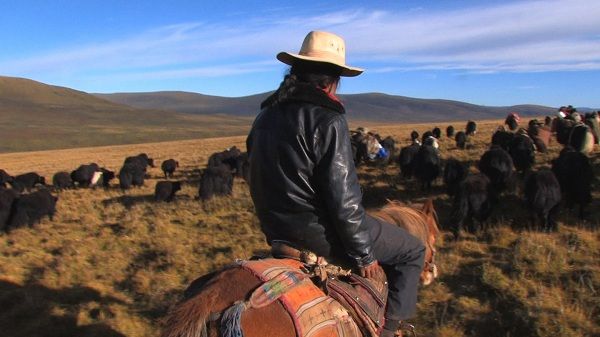
East meets Wild West, a Tibetan nomad ‘cowboy’
For generations, these nomads kept their herds moving, following the fresh green pastures and moving ahead of the changing weather. As the seasons changed, so did their grazing lands, using the higher pastures during the summer and following the traditional herding route to their winter pastures at lower altitudes. The only limits to their roaming were the high Himalayan mountains, the deep river gorges, and the weather.
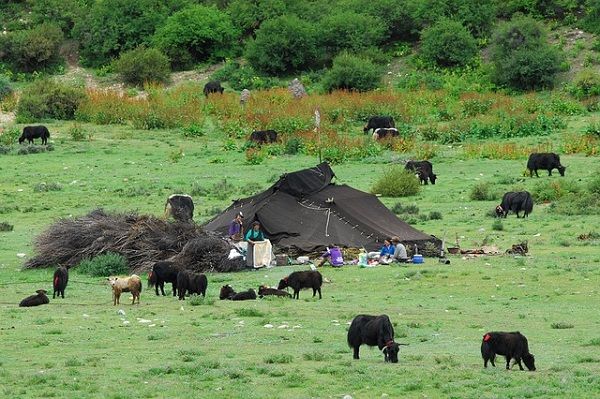
Yaks graze in the pasturelands surrounding the traditional Tibetan yak-hair tent
This nomadic existence was the natural way of life for the Tibetan people for thousands of years. Despite modern developments on the Tibetan plateau. They follow this way of life in the summer months. These modern-day nomads spend their winters living in stone-built houses. When summer comes they head out onto the plateau’s best grazing lands with their herds.
Table of Contents
Origins of the Tibetan Nomads
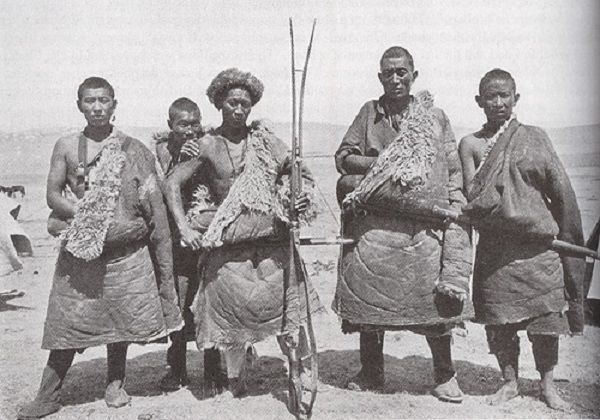
Tibetan nomads in Gansu in 1927
Tibetans are believed to be descended from a mixture of the ancient peoples that populated the plateau around 15,000 years ago and the Qiang nomads of ancient northern China, that migrated south to the plateau around 11,000 years ago. These migrant Chinese integrated with the earlier residents of the plateau, and the typical nomadic life of the ancient Tibetan people began in earnest.
In later years, the Tibetan king, Songtsen Gampo, built his empire on the backs of the Nomads. The strength of that empire was based on the fact that Gampo could utilize the huge number of Tibetan nomads as a mobile army and expand the frontiers of his lands further. This was also the way that the Mongolian Empire, under the rule of Genghis Khan, expanded to the edges of the Tibetan plateau, and interacted with the Tibetan nomads in around the 13th century.
Modern Tibetan Nomads
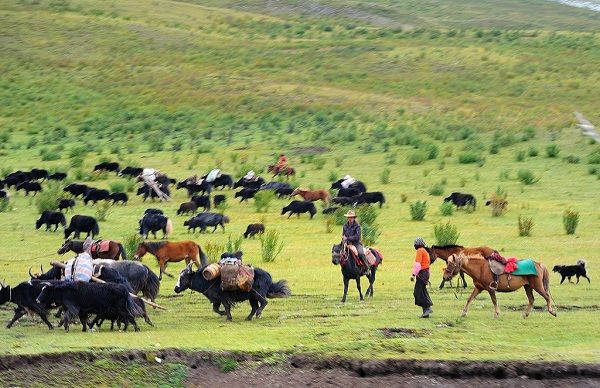
Tibetan nomads moving the herds to greener pastures
With the introduction of more modern ways of life to the plateau, many of the nomads now live in stone houses during the winter, near their winter pastures. But come the summer months, they head off with their herds for the traditional grazing lands of their ancestors. Driving their herds of yaks across the Tibetan plateau to higher altitude pastures, these modern nomads quickly return to their traditional way of life, moving the herds from one lush grazing to the next as their yaks consume the lush green grass of the pasture lands.
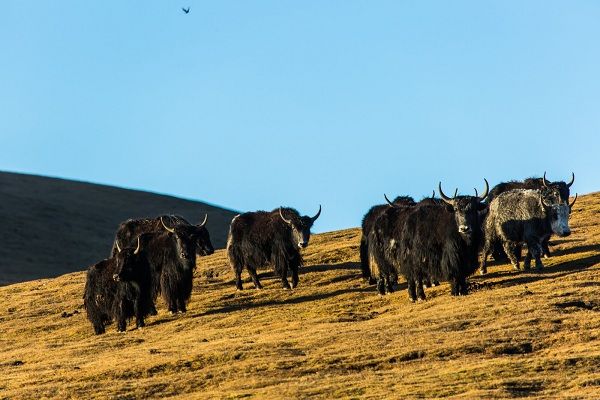
Yaks graze on the lush pastures in the warm Tibetan summer
One of the most interesting characteristics of the Tibetan nomadic life is their relationship with the land. Strong believers in eco-friendly agriculture. These nomads know when the grazing has reached its limit and move on to the next lush pasture. And in the pasture lands are the small flowers that the nomads look for to feed their herds. Ask any nomad, and they will tell you that these small prairie flowers are good for the yaks, helping to keep them healthy and strong. But none could tell you the reason why. This knowledge has been passed down through the nomadic people for thousands of years.
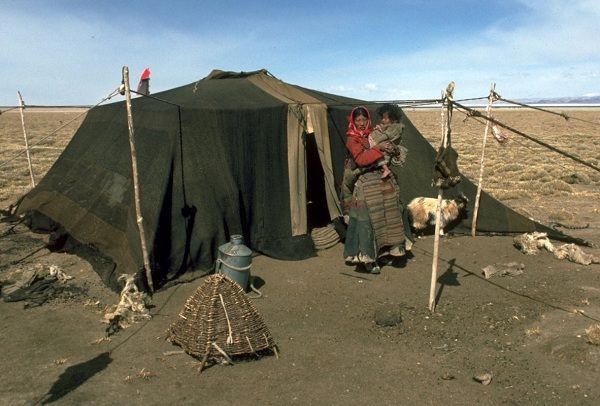
The traditional Tibetan nomads tent made from yak hair
Nomad tents are one of the most easily recognized aspects of this lifestyle. These huge yak-hair tents are the family’s home for the summer months. The stove is placed in the center of the tent, with the bedding and a living area around the walls of the tent. While there is often a small altar for these Buddhist nomads to pray at while out in the prairies. The stove is also believed to be sacred, as it is the center of their lifestyle within their yak-hair homes.
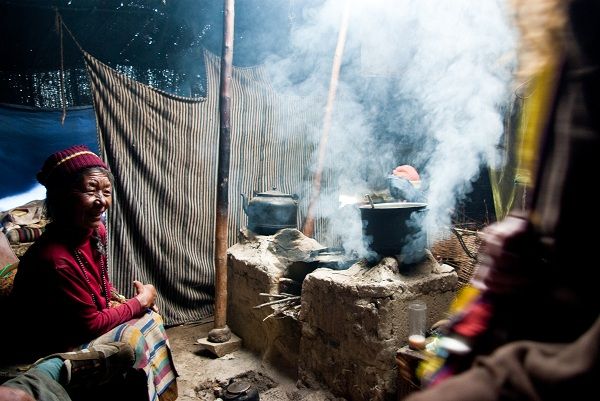
Inside a traditional Tibetan nomad tent
Lifestyle
In the Tibetan nomadic family unit, everyone has their place and their jobs to do, even the dogs. The nomads are experts at utilizing all the natural resources to improve their existence on the prairies, and the yaks play a major role in this. The men tend to the herds and use the yak hair to spin wool, make ropes, and even make slingshots, while the women turn the wool into fabrics for their tents, blankets, and clothing.
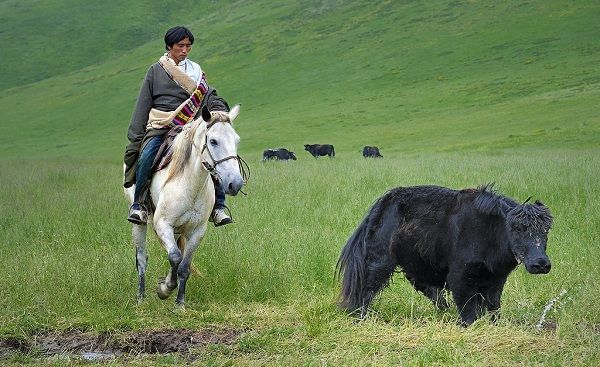
Many Tibetan nomads still herd the yaks using horses
Hardy people, the women venture out in all weathers to milk the yaks and make yogurt, cheese, and butter, as well as grinding barley, fetching water, and collecting and drying the yak dung for fuel for the stoves and fires. Even the kids have their own responsibilities, helping to herd the livestock, and tending to the young animals.
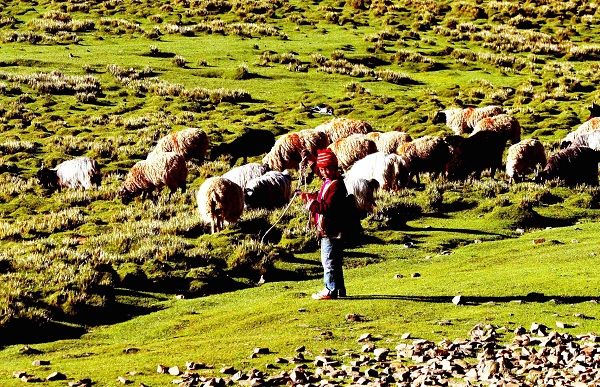
A Tibetan nomad boy looking after the flock of sheep
The role of the male in this nomadic society is to buy the provisions. They need to survive that cannot be found in the wilds. They find the hay for the winter feed and will drive the livestock to the markets to sell them when the need arises. Tibetan nomads sustain their outdoor lifestyle through hard work and hard choices. As well as their harmonic balance with nature and the wisdom that is passed down from generation to generation.
Tibetan mastiffs as guard dogs
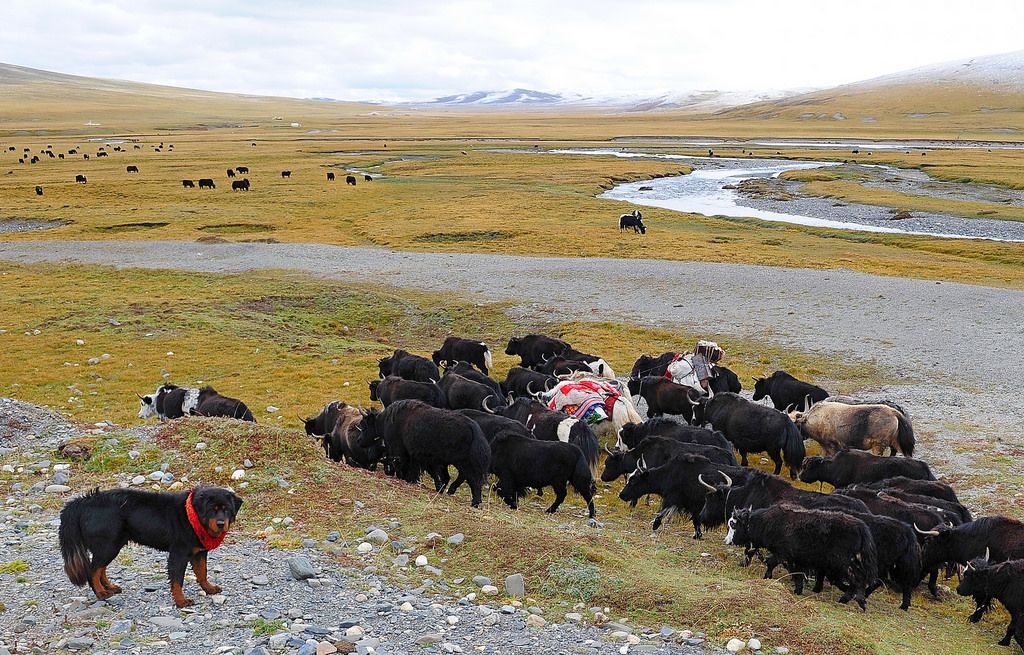
Tibetan mastiff alongside its herd of yaks
Even the dogs play an important role in this nomadic lifestyle. Tibetan mastiffs, long bred for their ferocity, are the guard dogs of the herds at night. They keep the herd safe from wandering predators in the remote prairies. Such as the wolves and bears that still roam the Tibetan plateau. Raised within the family home from birth. These huge beasts are fiercely loyal to their family and have an amazing memory that allows them to distinguish individual yaks in a herd of hundreds. A full-grown mastiff can easily bring down a prowling wolf, and two or three can fight off an entire pack. They are so fierce.
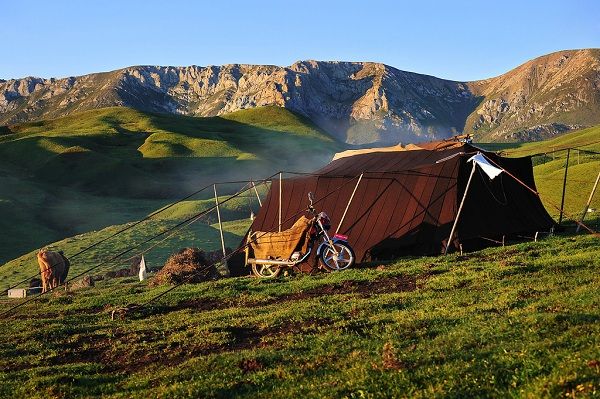
A more modern Tibetan nomad tent made from nylon, with a motorcycle, two of the few modernizations of yak herders
While the rest of the world grasps the wonders of modern technology as fast as it can. But these nomadic people are happy with their simple lifestyle. Living on the Tibetan plains and prairies, tending to their herds. And wandering across the grasslands in their bare feet, their ancient and traditional life is one of simplicity and contentment.
Here is the Tibet travel advice for the tourists before traveling to Tibet.
Recent Posts
All Categories
- About Tibet
- book a Tibet tour
- Buddhism Practice
- Budget Tour
- China-Tibet Train
- Customized Tibet tour
- Historical Sites
- Hot Springs in Tibet
- News
- Photography in Tibet
- Tibet attraction
- Tibet Group Visa
- Tibet Motorcycle Tour
- Tibet Small Group Tours
- Tibet Tours and Tibetan Tour Guide
- Tibet Train
- Tibet Travel FAQs
- Tibet Travel Information
- Tibet Travel News
- Tibet Travel Permit Update
- Tibet Travel Prices Rises
- Tibet Trek
- Tibet Trekking Tour
- Tibet weather and climate
- Tibet Wildlife animals
- Tibet Winter Tour
- Tibetan Buddhism
- Tibetan Cultural Features
- Tibetan Culture and Poeple
- Tibetan Festivals
- What to see in Tibet



